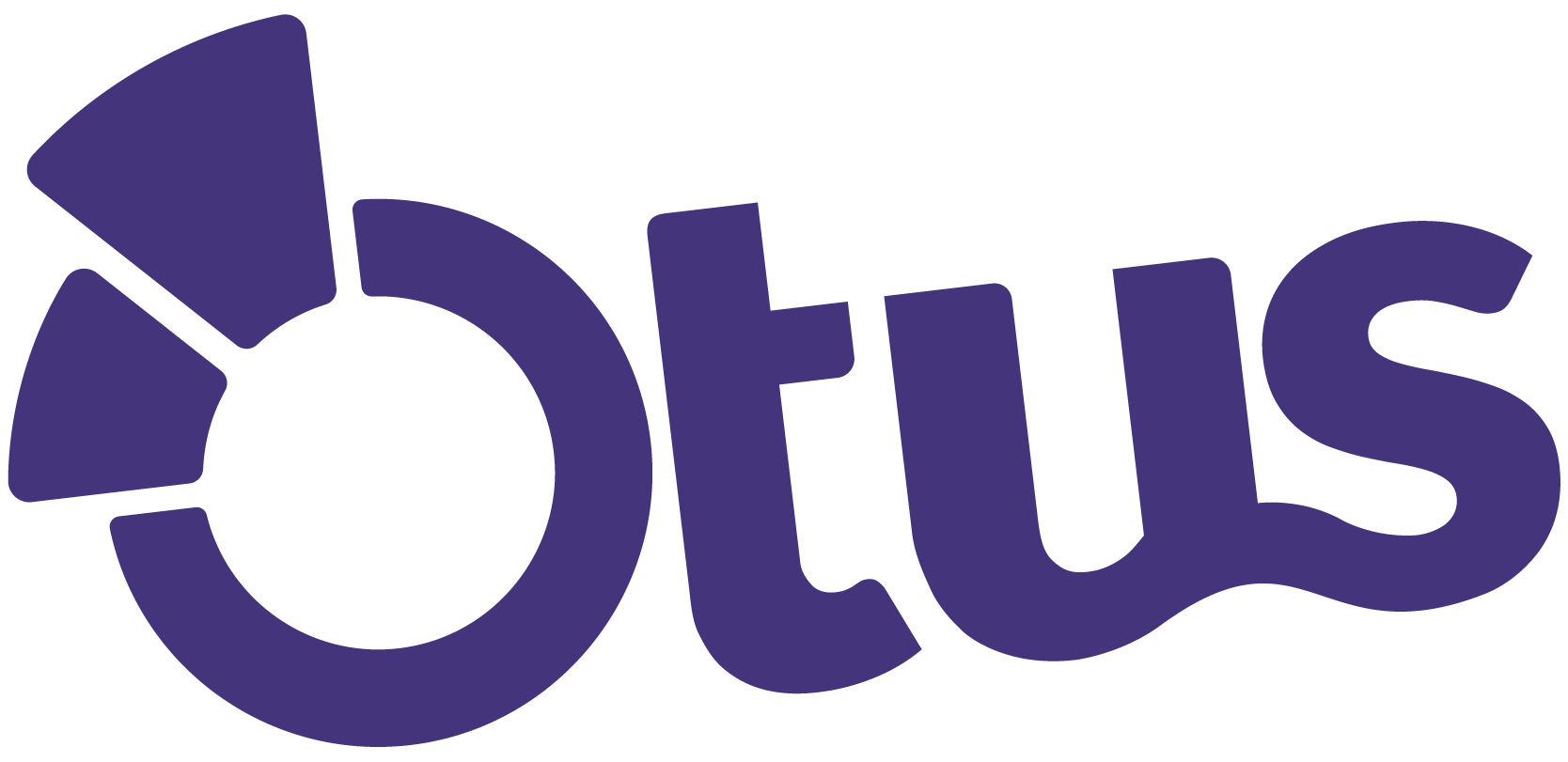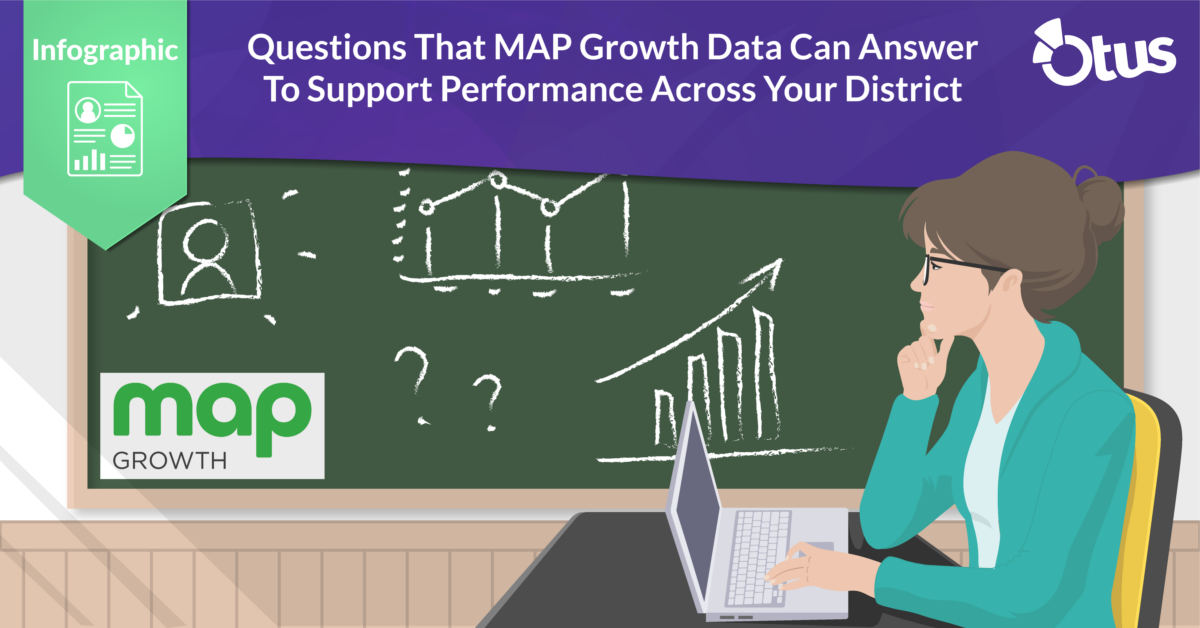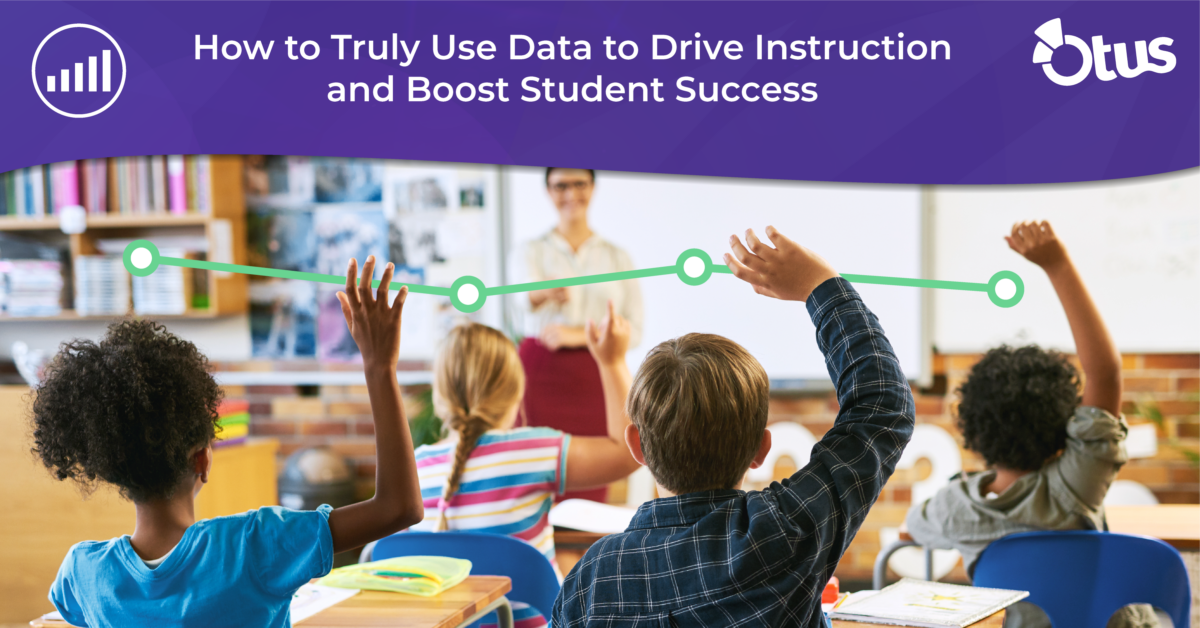A Conversation with Dr. Paul O’Malley
We sat down with Dr. Paul O’Malley, superintendent of Butler School District 53, to learn about how he and his colleagues are using Otus to harness powerful student data to drive personalized student learning plans, and how he has helped his district to become one of the highest-performing in the nation. In 2022, Brook Forest Elementary School was named a National Blue Ribbon School by the United States Department of Education – marking the fourth time a school in the Butler district has received the prestigious accolade, which is awarded to less than 1% of schools nationwide. Butler was also awarded the Whole Child Award by the Illinois ASCD in 2018. In a recent issue of ILASCD Quarterly Journal, Dr. O’Malley shared the success his district has found through individualized learning plans and how Otus helped make it happen.
Three key takeaways from our conversation with Dr. Paul O’Malley
- The importance of data-driven personalized learning plans
Dr. O’Malley highlights the value of using data to drive personalized student learning and the success his district has found through this approach. By leveraging data for decision-making and promoting data literacy among stakeholders, Butler has enhanced student engagement, fostered communication and collaboration, and promoted educational equity. This data-centric approach has boosted student outcomes and propelled the district to the pinnacle of performance rankings.
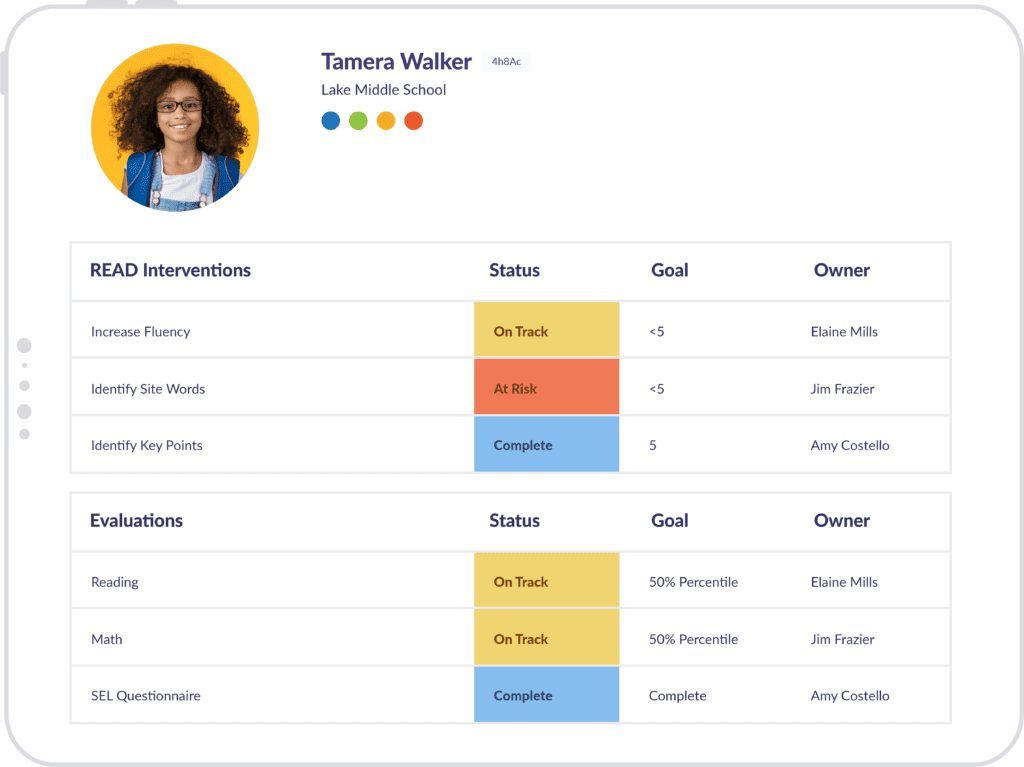
- Embrace a slow, methodical approach, and rely on support
To ensure educators become more data-wise and comfortable with new systems, Dr. O’Malley recommends a slow and methodical approach, including training and professional development, as well as partnering with companies like Otus to create comprehensive calendars and training programs and provide ongoing support long after the initial onboarding phase. Dr. O’Malley also emphasizes both the challenges and benefits of getting staff to buy into new data-driven initiatives. Implementing a new system like Otus often encounters resistance. However, by involving stakeholders with diverse viewpoints, there’s an assurance of collective agreement, confirming that the new product is appropriate and truly fulfills its intended role.
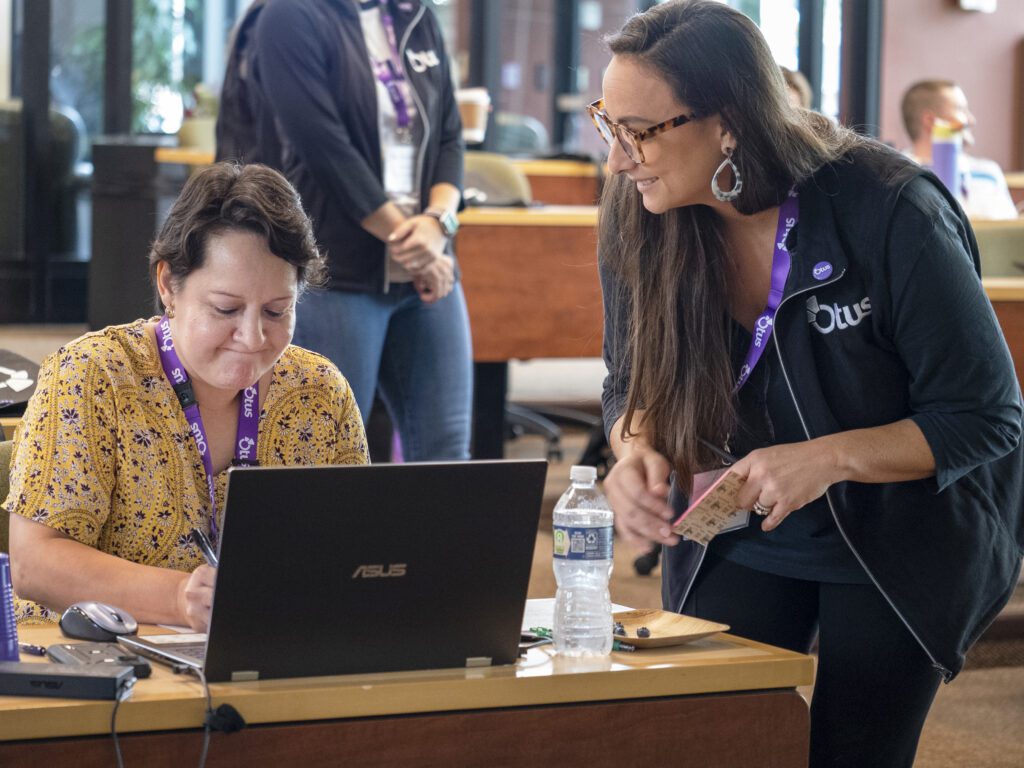
- Balance technology with other aspects of education
While technology like Otus can be a valuable tool for supporting student growth, Dr. O’Malley stresses the importance of balancing technology use with other activities, such as field trips and hands-on learning experiences, to maintain a well-rounded educational experience. Technology is just one tool in an educator’s toolbelt, and will never replace the meaningful experiences that are essential to a well-rounded educational journey.
Interview Transcript
Kendell Hunter (00:00:08)
Well, Dr. O’Malley, do you want to just start us off with an introduction of who you are and more about your background?Dr. Paul O’Malley (00:00:14)
Yeah, I’m Dr. Paul O’Malley. I’m the superintendent of Butler School District 53 in the wonderful municipality of Oakbrook, Illinois. We are a really small district, really a diamond in the rough when it comes to the educational opportunities that we extend to students. And my journey as a superintendent started in the classroom. As a teacher, I taught at Stevenson High School, which is one of the most competitive schools in the country, and I taught chemistry, physics, and natural science. I decided that I would want to become an administrator to be more impactful in having a greater say on what is provided for our students. So I continued on with the journey of becoming a director of finance, then an assistant superintendent, and finally, I’m here today in the role of the superintendent. So it’s just been a wonderful journey. It continues to be wonderful in terms of the challenges that we’re presented with over the past few years, but just a very exciting position. I couldn’t ask for a better career because, literally, my vocation is my vacation, so I enjoy every day that I’m in this role.Kendell (00:01:27)
I love that. Thank you so much for sharing more about your background. And I imagine having started in the classroom probably pretty deeply impacts your role now, having that context, just moving all the way through those different positions. So that’s always nice to hear. Tell me more about Butler and how you and your staff and fellow administrators are really using student data to provide your students with that world-class education.Dr. Paul O’Malley (00:01:53)
Yeah. Here in Butler, we have some of the highest-performing students in the state. Unequivocally, over the last few years, we were recognized during the COVID years as National Blue Ribbon schools, both Brook Forest Elementary and Butler Junior High. And so one of the things we really do well is we set performance goals for each and every one of our students. And we’ve been doing that since my tenure here, which this is my fourth year in the district, going on my fifth since my tenure here. That’s just been one of the most important things that we put in place. We also create personalized learning plans. I think that’s something that we’ve gotten better and better at doing. It’s literally taken us three years to embracethe Otus product, which I would think is one of the most phenomenal things that we’ve come upon. We researched many, many things before we came to the conclusion that this is going to be the flagship model that we use, the LMS system.In addition, we measure progress quite regularly. That’s one of the things that we’ve really done, especially with the Map and the IR. Those are just two really critical assessments that we use. The map is more localized. The Illinois Assessment for Readiness is the state expectation that we have to fulfill. And then lastly, we use our assessments, our common assessments in the classroom, to triangulate the data so that we can really centralize a dashboard to view all data points and then identify common themes for students who are struggling. According to our MTSS model, whether it’s tier one, tier two, or tier three, we’ve also put into play what I refer to as tier zero. It’s kind of like the zeroth law of thermodynamics they forgot about that one. So we really focus on tier zero, which is our gifted and our exceptional students as well. So that’s really some of the things that we’ve done to provide the world-class education for our students.
Kendell Hunter (00:03:41)
Wow. I mean, first of all, congratulations to your entire team for all of those fantastic recognitions of all the work that goes into that. That’s very impressive. I know I heard you say that every student has a personalized learning plan, which is just so phenomenal, and you’re using those multiple measures to really drive those plans. What does that look like at a local level? Is that done by teachers, teams? So many schools are looking to do exactly that. So I’d love to just share with them more how you got to that point of having that goal for every student. And then, is there transparency among other stakeholders? Where does all this live?Dr. Paul O’Malley (00:04:24)
Yeah, I think we’re in our infancy in the journey. It’s literally taken us three years to get people to understand that this is the direction that we’re going. And it really fits into three camps. Right. You have individuals that have taught for many, many years and they’re acclimated to a very old-school perspective, not necessarily one that doesn’t warrant us to basically take a look at. You have people that are in the middle, that are in the transitional phase where they’re open to what we’re presenting, but at the same time, they’ve seen initiative after initiative after initiative that have been abandoned, after abandonment after abandonment. And then, finally, you have the people that have totally bought in. And so I think in our infancy, we literally have the opportunity where people can view all the information. Where we really have struggled is people just don’t have the data knowledge, the data wiseness, to understand the depth and breadth of what presenting. And so we’ve done a good job of really making sure that this enhancement of the school-home connection is taking place. The journey has been one that is very slow and methodical and very thoughtful because we want to make sure the teachers are buying in. And really, it comes down to centralizing the data. So centralizing that data so that it’s in more or less a depository where you can view all that has really been critical, mission-critical, as we’ve really got the buying. I kind of think of it as an iPhone. An iPhone has so many different apps you got PayPal, you got Venmo, you’ve got hundreds if not thousands of downloadable systems that you can use. But the iPhone actually does have analytics that can actually give you feedback on the time that you spend within these systems. So that’s really what we’ve done really well. But again, in the infancy portion, it’s just getting to become data-wise is going to be the next step of this journey as we start to personalize and really focus in the personal lives of each and every one of our students.Kendell Hunter (00:06:26)
A follow-up question for you. Do you think that those educators who maybe are more apprehensive or who have seen initiative after initiative come through and leave, do you think seeing the benefits of that centralized data system and then the impact on student outcomes has changed their view at all?Dr. Paul O’Malley (00:06:46)
I think so. I think to a certain extent that would be a fair enough question to ask. It’s literally finding the fulcrum in a balance beam. You just got to continually try and balance it out and find really the parallel platform that everybody feels that they have the buy-in. But the way I look at it is it’s good to have people that have a different perspective that may be viewed as naysayers because that’s going to help you to become better at what you’re doing. And that’s going to really challenge us to make sure that the product is doing what’s expected, so that when the time comes, when those individuals are fully bought in, if they’re able to buy in, you’ve definitely done your due diligence to basically give them the pathways to really see that this is something that’s going to be great for kids and then continue to be great for kids.Kendell Hunter (00:07:36)
Absolutely. I know you touched on how your school community is using Otus, but I’d love to just hear more about Butler’s journey with Otus, including what needs might have been present initially that really prompted you all to adopt that all-in-one education technology tool like Otus.Dr. Paul O’Malley (00:07:55)
Yeah, if we go back in time three years ago, that was really during the time of COVID. And I think one of the things that worked to our advantage is for the first time ever in education, how we provide education was challenged to an extension that was just so vast and so unpredictable, it would behoove us to really just take some of those practices and intertwine them within the systems that we do have in place, because people do want their kids to come to school. People do want them to be on site. But to the same extent, we can extend that experience by enhancing our technological advancements. And so what we did is we took a phase-in approach, a very methodical phase-in approach, year over year over year. We built a really comprehensive calendar that we’ve shared with Otus. In fact, we’ve actually built it with Otus, who actually helped us as part of the process, which is one of the things that we found is to be a great partnership. Training has been mission critical because training the trainers model may work to a certain extent, but you really have to buy into that model to a really extensive approach. In fact, we have one of our school’s eight coaches that the teachers can go to at any point in time so that they can look and see and feel the things that they’re going to be doing so that they have that level of comfort, which really ties in with the last component, which is the professional development. We’ve really spent a lot, a lot of time on the PD portion making sure that everybody understands that we are going to continue on this journey. We’re knee-deep into this journey and before you know, we’re going to be up to our next. But if we’re up to our next, we want to make sure that we are prepared to an extension that’s going to be really unique, really visionary.Kendell Hunter (00:09:43)
I love to hear that and just kind of putting myself in your shoes or thinking about if you all have data days or days where you’re really all in Otus pulling up data on a student, what does that look like? What areas of the platform do you all find yourself really digging into and using to guide those conversations that are so much more important than the actual tool itself? Right? The tool is there to support you all. What specific areas of the platform do you find administrators are really going to to be able to see and make changes to what’s happening daily with students?Dr. Paul O’Malley (00:10:20)
Yeah, it’s a focus on the data analytics is really what it is. It’s the analytics that we really have to as I spoke to earlier, you got to become data-wise to really truly understand the depth and breadth. But we’ve really focused on the data analytics. And then building in advanced assessments is one of the things we’re really focused on this year, because we want to make sure it’s centralized, so much so that the data can do the work for our teachers so that they could see the gaps, especially under the MTSS model, whether it’s tier one or tier two or tier three. The other part is developing the ICANN statements. That’s something that when I came into the district, we did not have our maps, our curriculum maps. I could share with you that I was told on many occasions, oh yeah, we did the curricular maps. We already have those. And I would request that people send it to my email. And to this day, I could tell you the inbox is empty with the curricular maps because we just didn’t have them to the extent that we did. So we really spent a lot of time building the maps, integrating the maps in our curriculum, integrating them, aligning them with our state standards, the Illinois State standards, which has been mission critical, and then of course, developing those I can’t statements so they’re all intertwined and then most importantly, just the teacher insight.Dr. Paul O’Malley (00:11:28)
So we’ve been very slow in making sure that we hear their voices. We’ve really taken an approach where information is not only going to percolate, but it’s going to be pressed into the system. Most of the information is being percolated through the system. And I could share with you for next year, for this year, we’re focusing on the gradebook that’s going to be one of the key components because we’re really tied in with our Power School gradebook that we created back in the day. And so that’s going to be a really difficult hill to climb because people are acclimated to one system, not only the teachers but also the parents and the students. And so those are the things that we’re going to have to overcome in addition to tagging the assessment with our standards. So we may have assessments, but what questions are those assessments lining with respect to the state standards? How many questions do we have? So it’s statistically valid and reliable, and those are the things that we’re going to be really putting into play now, as well as viewing student mastery. But this is one thing I’ll share with you that’s really important, that just gives you an idea. We gave access to our parents to look in Otus and to see all the great things it provides. And at the same time we printed our grades for our parents. And of course, old habits die hard. We found that we had very few people that were logging into the system. And so at some point in time, we have to make sure that we’re not only informing the parents of this transition, but we got to provide the professional development so they understand that this is going to be where we’re going. But that just kind of gives you the involvement over the last year or several years that we’ve been in play, as well as what we’re going to be doing not only this year, but in preparation for the following years.Kendell Hunter (00:13:10)
I love to hear that. I think that really just goes back to what you said about that tiered approach. This offers school districts a lot and the most successful administrator schools and impact on students we’ve seen is really that phased intentional rollout with an end goal in mind that light at the end of the tunnel, but knowing we have milestones along the way. And of course, we’d love to hear that our team worked with you on the implementation plan. We’re all former educators, some administrators as well, so we appreciate that intent there. So would it be safe to say you got that buy in from everyone with that all-in-one data dashboard and then from there kind of look to incorporate the multiple measures of common assessments which are informing your personalized learning plans, and now you all are looking to roll out the gradebook because that data flows there. Is that kind of the Butler progression?Dr. Paul O’Malley (00:14:04)
In summary, yeah, that really came from the teachers. That’s what the teachers wanted to do. I think it goes back to they want to test the systems. They want you to find where they are with respect to the fulcrum and the balance beam. And you’re going to have to meet, just like you’re meeting your students at different pathways on their journey of education. It’s the same thing with the teachers. So the teachers more or less decided what they wanted to work on first, and we actually gave autonomy to the building. So each building has a different rollout, a slightly different rollout, and what they’re expecting over the next several years. And so the grade book is going to be the biggest challenge, but it’s going to be the greatest outcome because that’s where you’re really going to see what’s really going to see the alignment with the standards. And those standards are directly tied with your map and your IR, which is going to put those students on a trajectory to proficiency, especially when they enter high school. So that’s really one of the things that I emphasize with the parents is that we want to put them on a trajectory so that they’re in the honors and they’re in the AP and that they are successful at the Sat or the act. So that when they apply to the Harvard, the Browns, the St. Luis universities, the Pepperdines U. OFIs, they’re going to be successful in their application process because they’re going to have the background, the background knowledge especially to perform at the levels that are expected at those universities. And so, like I stated earlier, we’re just taking our time, making sure that it’s mapped out very clear, very methodical, very thoughtful. But most importantly, the teachers have really the autonomy to not only present what’s what we’re working on, but to modify, if they so choose, with their building principles.Kendell Hunter (00:15:44)
Absolutely. I do want to shift the focus here. I had the pleasure of reading an article that you were featured in and rose, Illinois ASCD and in that, you really focused on Butler’s strategic goals, or in some districts, I think it’s called, like, their strategic management plan. Lots of different names, those guiding principles that really drive all the decisions that are made at the district level and all the way down to the building level. That guiding path. Can you share just a bit more about some of those goals? And then I know in the article you touched on Otus’s alignment, so kind of just you all are focused on and then how you’re making it happen.Dr. Paul O’Malley (00:16:23)
Yeah, I can share that. When I came in the district, we had somewhere in the neighborhood of 50 goals, which is incredibly outrageous. It ends up diluting it because you end up being a mile wide and an inch deep. And so we made sure we fulfilled the supermajority of those goals and we narrowed it down to several of them. The Personalized Learning Plan is one of the things that we’ve really kept a close eye on with those strategic goals. Some of them have more or less metamorphosized into strategic abandonment, things that practices that are no longer necessary or they’re just regular parts of. This is how Butler 53 does business. I could share with you that we continue to provide a high-quality student academic experience which is beyond all limits for which our district is really known. As I stated earlier, that’s one of the reasons, the primary reason that we were able to work with our teachers to build off of two National Blue Ribbon School Awards in two years back to back, which I think is phenomenal, especially during COVID when we had some of our kids that were actually learning from home and kids that were in person. That’s the model that we provided. And then what we did is we extended into our capital Improvement and Vision projects. So in this day and age, we focused on our safety and security, our life safety, and really the wow factor technologically, more specifically in our classroom, so that the education is closely reflected with the environment in which our students are learning. And so that’s really some of the things that we’ve been focusing over the last several years, really narrowing down the goal so that the quality goes really high into those goals, so they perfect it. So that’s more or less what we’re going to be known as from this point forward, this is what we provide. This is more or less the Plc model. And we’re just really just pleased with the strategic goals that we’ve really focused in on over the past several years and we’ll continue to over the next several years.Kendell Hunter (00:18:20)
I know you mentioned that PLC model. Can you just elaborate a little bit more on what that looks like for Butler teams, how you all are engaging in those PLCs frequency, organization, structure, things like that, just for other school leaders who are looking to do the same and have similar goals?Dr. Paul O’Malley (00:18:39)
Yeah, we’ve really left it at a building level. And I know contractually in our CBA, our collective bargaining agreement, we have time set aside where our teachers are required to be on-site to work with their building principals. And so what we do on an annual basis is we make sure that our principals’ goals are adopted by the Board of Education, so it’s very clear what their goals are for that year. Our principals then share those goals during the Teacher Institute days, which are a few first two days of the school year, as well as days that are strategically placed throughout the calendar year. And they then present what they’re going to be working on for the year on a year-to-year basis so that it’s very clear on what the expectations are. So that’s one of the approaches we’ve done with our PLCs, and we’ve really left it at a building level, and we’ve given total autonomy for each grade. They each work at a different pace. Their goals may be slightly different from what’s presented in a strategic plan, but it really comes down to the what and the how. The goal is what, and how you get there. I really don’t get deeply involved as long as you’re able to fulfill that expectation. So we can actually flip that statement too, and it can actually be the how to the what, depending on where you are in your journey or where you are in the strategic goals. But for us, we’ve really left it at the building level and we’ve really made sure that it’s grade-level based. We have our coaches, they meet regularly with their building principals, weekly, I’d say, and it’s just been a great journey. It’s been really well organized.Kendell Hunter (00:20:08)
I think that communication and expectation on day one is just so huge, and I think that probably makes quite a difference. It’s that collective efficacy. We all know what we need to do, what our goals are, and we’re all bought into it for sure, really impact those students and those outcomes.Dr. Paul O’Malley (00:20:27)
Yeah, that’s Hattie’s hinge points, right? So those are the hinge points that you want to really focus on. And look, there may be a specific hinge point that doesn’t qualify as meeting a threshold that’s going to be impactful. But as you start to build one hinge point on another hinge point on another hinge point to your point to efficacy, three or four hinge points put together is going to be incredibly impactful and incredibly rewarding to the journey, the educational journey, not only for our students but of our teachers.Kendell Hunter (00:20:54)
Absolutely. I imagine that the climate and culture of your educator community is excellent just based on all the things we’ve shared and that buy-in clearly all of those goals. It’s obviously working for your student outcomes as well, with a lot of those test scores and all those different measures that you all have to show that success. So, having worked really with administrators across the country in my role at Otus, I found that a shift is often needed when thinking about edtech tools. And it’s really that no edtech tool, including Otus, should be any district’s goal or initiative. Right? The edtech tool or the tool that you’re interested in should simply supplement or help your school community reach those goals and make it more attainable. I’m just curious if that resonates with you at all. And then, if so, does Otus fulfill that expectation for your community of simply supporting the goals, not being the goal?Dr. Paul O’Malley (00:21:53)
Yeah, the answer to that short answer is yes. District 53 focuses on developing personalized learning plans for students and further focus on individualized learning. I mean, we’re in the phase of differentiating, which is a different standard that you’re going to have to integrate. And yes, we sought out a tool or a platform to support that expectation. And I could share with you,we shopped many different tools before we came to one that we felt was superior, not only because of the ability to integrate but really the support that was provided that was really unexpected. It’s been really something that has just been fabulous, to say the least.And it really became a solution for us due to a third party integration where data visualization was taking place and really the parent connection can and will take place over time. And so for us, that definitely does resonate with our strategic plan. It’s something that we believe is to be very critical, but at the same extent, you don’t have to come saturated with your technology. I mean, kids are already in their iPhones on TikTok or Instagram or who knows what other social media platforms they’re accessing on a regular basis. And so we really just tried to keep them whole and to make sure they’re connected because I don’t think it’s a good solution for a youngster’s head to be really burrowed down into the screen of a computer all day long. You got to also balance it with the great things, which is for us visiting the zoo on a daily basis, where we have a field trip, where we go to the zoo and you can see the animals and you can integrate adopting animals from the zoo and making sure that they’re part of our curriculum, a part of our building, with the duty of performing at a level educationally that we’re expected. We have to balance it with having fun. Right. It’s a work hard, play hard attitude. And so for us, yes, having a tool that is able to really act as a depository is going to be mission-critical. As I stated before, it’s the data wiseness that we really have to focus on over the next several years.
